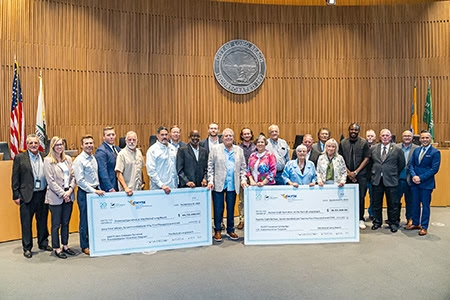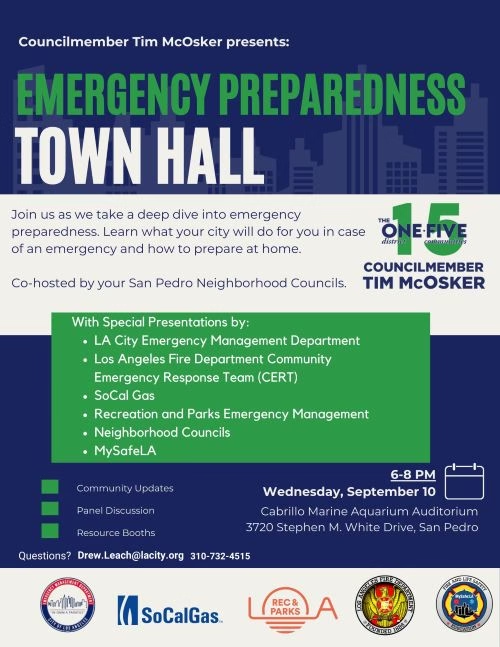City of Carson Breaks Ground on Next-Generation Fiber Optic Network
CARSON — The City of Carson Sept. 3 broke ground on its first-ever municipal fiber optic network, a landmark $27 million investment funded by the city. The project will transform connectivity across all four city council districts, delivering fast, reliable, and future-ready broadband for residents, businesses, and public facilities while closing long-standing digital divides.
The first phase of construction includes the installation of more than 116,000 linear feet of conduit and 250+ telecom vaults, extending high-speed fiber along Avalon Boulevard and connecting Carson’s 12 major parks and key city facilities. The design incorporates underground boring, trenching, and bridge attachments to ensure efficiency and minimize surface disruption.
HP Communications, Inc., the prime contractor, will oversee construction and deliver technical expertise. Transtech Engineers, Inc., a multi-disciplinary municipal services and engineering firm, is also supporting the project.
Carson’s leadership underscored the importance of the project in preparing for the 2028 Summer Olympic Games. As the first municipality to officially sign on as a venue city, Carson will rely on the fiber network to support tourism, public safety, traffic management, and the connected services needed to welcome visitors from across the globe.
By taking this step, Carson becomes the first city in the South Bay to construct its own municipal fiber optic network.
Details: For updates on construction progress and broadband services, visit www.carsonca.gov.
City of Carson Honors Local Heroes
CARSON — The City of Carson hosted a special tribute Sept. 2, to honor individuals recognized as the 2025 City of Carson Heroes. The event, held at the Carson City Hall, was a display of gratitude and community unity, celebrating the contributions of local heroes from the Carson Sheriff’s Station, the Los Angeles County Fire Department, and various community members.
The program highlighted individuals who dedicate themselves to making Carson a better place. Mayor Lula Davis-Holmes, on behalf of the Carson city council, extended congratulations to the honorees stating the heroes “embody the true spirit of Carson” and demonstrate a “commitment to service, a willingness to lend a hand, and the desire to mentor and empower others.”
Each honoree was humbled by their selection. When asked what single word came to mind when they thought of Carson, the heroes responded with words like commitment, family, responsibility, purpose, dreams, unity, and resilience. Each hero embodies these attributes, and makes Carson shine. They were celebrated for their pride in the city, their work to bridge gaps between different community groups and law enforcement, and their positive leadership and passion for serving people.
To watch interviews of the Carson Heroes, please visit the following:
City of Carson’s Facebook:
https://fb.watch/BUvyLXCgmJ/
City of Carson Youtube:
https://www.youtube.com/watch?v=TPU4LcGcHRE












